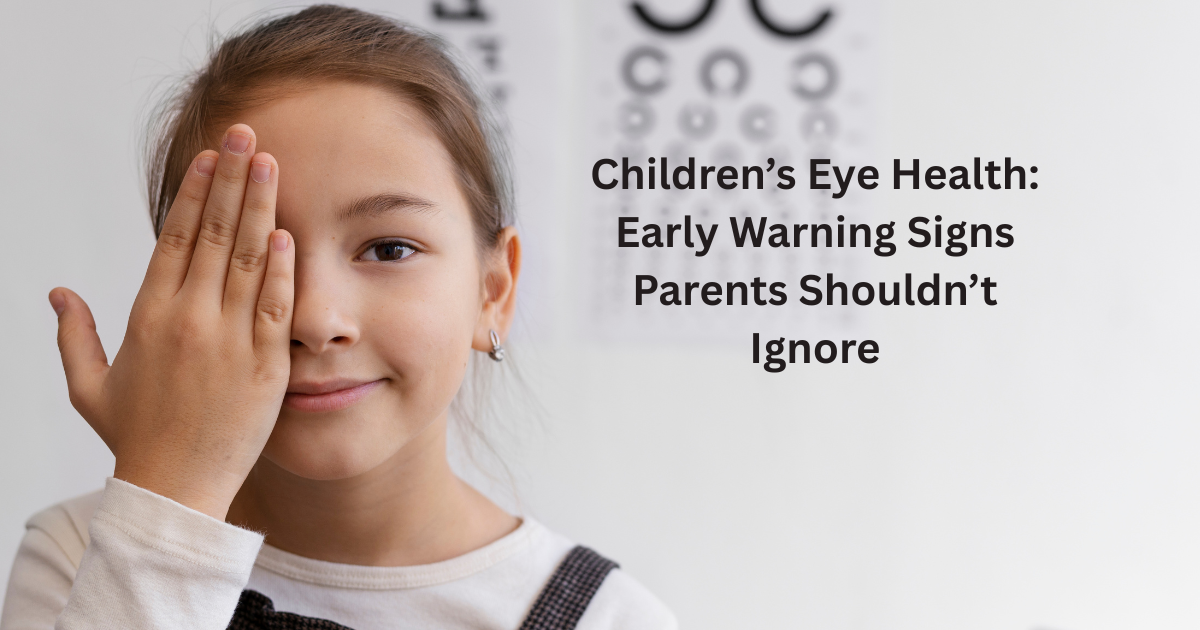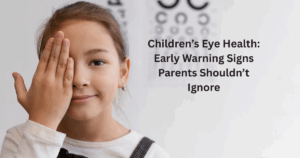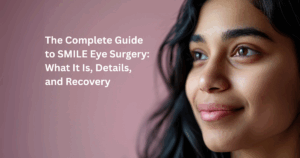As parents, we notice everything—our child’s first smile, first steps, and first words. But with vision, the indicators aren’t always so clear. Kids don’t often say, “I can’t see clearly,” because they might not even know something is wrong. To them, blurry vision or eye strain could be normal because it is something they’ve never experienced.
That’s why parents need to know the subtle, early signs that something may be amiss with their child’s eyes. Here at Tandon Eye Hospital, we see numerous children of different age groups with vision issues that could have been detected sooner—making all the difference in their eyesight, as well as in learning, confidence, and social interactions.
Here are some common warning signs that your child may be experiencing a vision issue, and why it’s important to monitor them closely.
1. Frequent Eye Rubbing or Blinking
Yes, all children rub their eyes when they are sleepy or tired—but if your child is frequently rubbing their eyes throughout the day, there could be something more going on than just sleepiness. Persistent eye rubbing or blinking can also mean eye strain, allergies, or even a refractive issue (such as nearsightedness or farsightedness).
2. Sitting Too Close to the TV or Holding Books Too Near
This is one of the typical symptoms of nearsightedness (myopia). If your child is always sitting directly in front of the television or reads books very close to his or her face, he or she might be doing so to see better—unknowingly.
Untreated myopia can advance very quickly over time, particularly in young children. Early diagnosis allows it to be controlled better.
3. Avoiding Reading or Complaining of Headaches
Does your child complain about headaches after school or avoid reading or homework? They’re not necessarily lazy or spaced out—they might just be having trouble seeing clearly. Weak eyes make reading a chore, and headaches are a frequent consequence of the added effort on their eyes.
If this is familiar, it’s worth eliminating a vision problem before attributing it to not being interested.
4. Tilting the Head or Covering One Eye
Observe how your child is standing when they look at something. If they keep tilting their head, covering one eye, or squinting, it may indicate that there’s something wrong with one eye and they’re doing it subconsciously to try and correct it.
This is often a sign of conditions such as lazy eye (amblyopia) or strabismus (misaligned eyes)—both of which are extremely curable if diagnosed early on.
5. Clumsiness or Poor Hand-Eye Coordination
If your child frequently trips, knocks over objects, or has difficulty catching a ball, it may not be coordination only—he/she may be having trouble judging distances because of poor depth perception or blurred vision. Children heavily depend on their eyesight for balance and movement, particularly in physical activity and sport.
Why Early Eye Checks Matter
Kids’ eyesight develops quickly during the early years of life. Finding and addressing issues early on will prevent vision complications later in life and even enhance their learning and behavior. Most vision issues, such as amblyopia or strabismus, are much easier to fix if identified before the age of 7.
At Tandon Eye Hospital, we suggest full eye exams beginning as early as age 3, or earlier if you see any of the signs listed. We employ gentle, kid-friendly methods and state-of-the-art diagnostic equipment to make your child as comfortable and safe as possible.
Your Child’s Eyes Deserve a Clear Start
Healthy eyes are critical to learning, development, and discovery. As a parent, having faith in your instincts and getting that eye exam—just in case—can make all the difference.
If your child is experiencing any of these warning signs, don’t hesitate. At Tandon Eye Hospital, our pediatric eye specialists are here to guide your child toward a brighter and clearer future.




